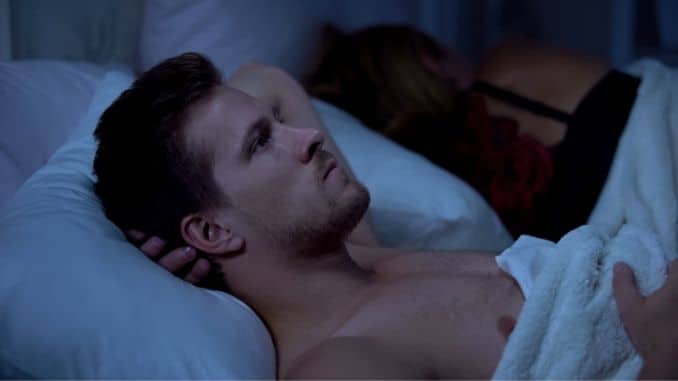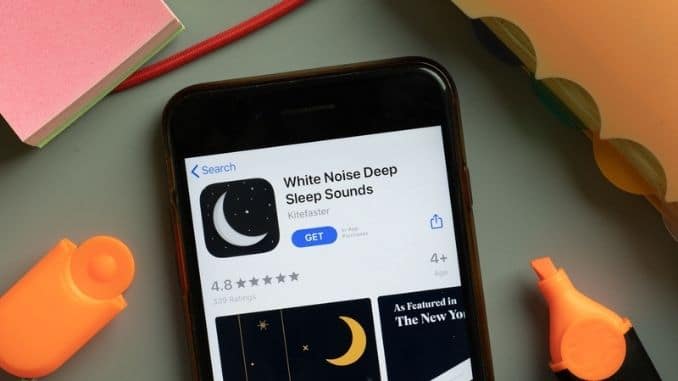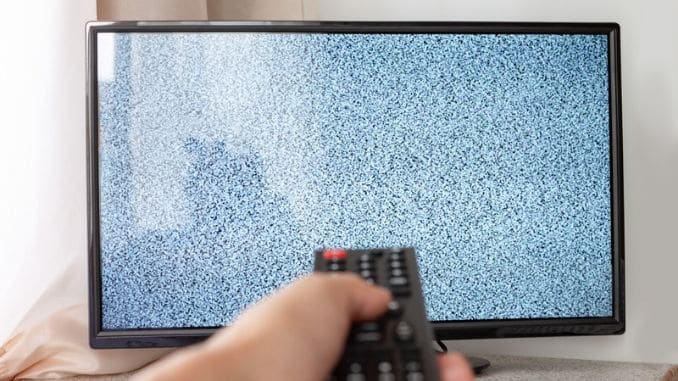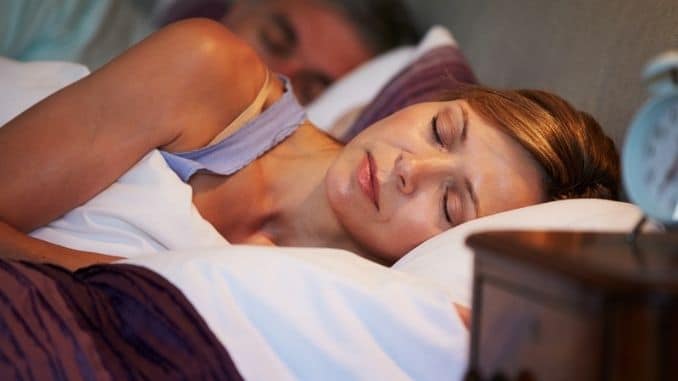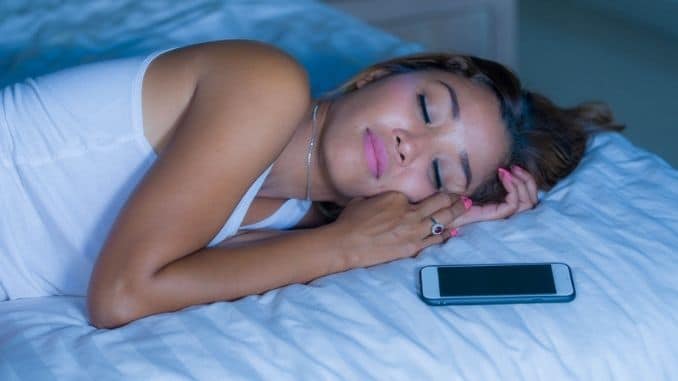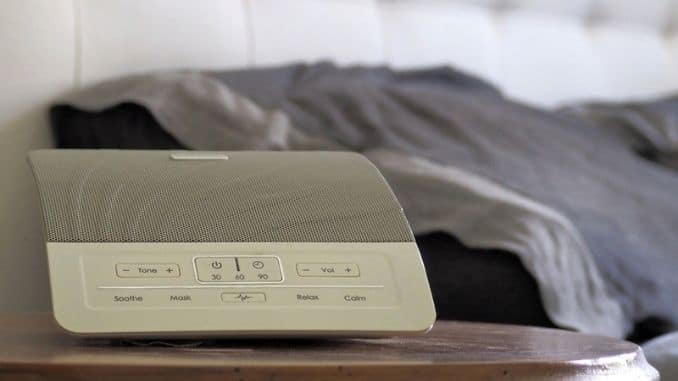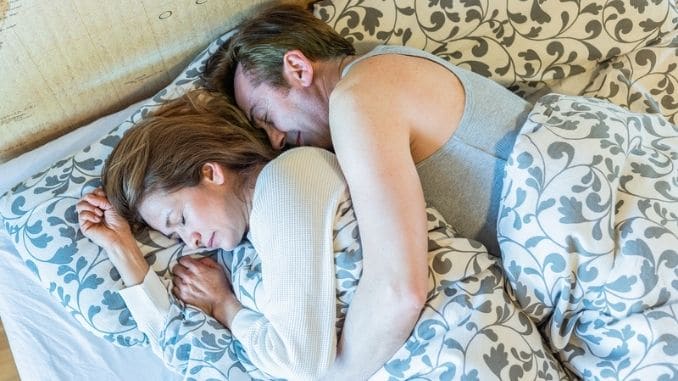
You’ve probably heard of “white noise.” Some people use it to help them sleep, and if it works, that’s a good thing, as a lack of sleep is terrible for your health.
According to the U.S. Centers for Disease Control and Prevention (CDC), adults need 7 or more hours of sleep per night for the best health and wellbeing. Adults who slept less than that were more likely to report 10 chronic health conditions compared to those who got enough, including heart attack, stroke, cancer, diabetes, chronic kidney disease, COPD, asthma, arthritis, coronary heart disease, and depression.
If white noise doesn’t work for you, however—or if you haven’t tried it yet—you may want to consider “pink noise.” Like white noise, it provides a constant sound in the background that can help eliminate distractions so you can fall asleep faster and stay asleep without being interrupted.
Pink noise differs from white noise in specific ways, though, that may make it more effective for you.
Why Does Noise Help You Sleep?
Before we get into the different types of “noise” you may use to help you sleep, let’s examine why listening to noise helps in the first place.
After all, when most of us think about going to sleep, we think about enjoying some peace and quiet. Why would we want to add noise to the mix?
The thing is that while we’re asleep, our ears are still working. That’s why you can be awakened by a sudden sound, such as the house creaking, a cat meowing, or a car going by on the street. It’s not these sounds that wake you up, per se, but the sudden change in sound or sound inconsistencies.
Having a steady, consistent noise going on can help mask these other intermittent sounds, allowing the brain to relax so you can fall asleep.
If you happen to live in a neighborhood where nighttime noises are frequent, you may also find you need help from some type of noisemaker to be able to get the rest you need. Different noises at night can wake you up, creating a cycle of waking and going back to sleep and waking up again that creates a fragmented night’s sleep. This can leave you feeling tired and cranky the next day, say nothing of the potential long-term effects on your health.
If you’re sleeping alone and tend to be hypersensitive to sounds, a constant noise will mask those little creaks and cracks keeping you awake. Having a consistent background noise can also ease anxious or stressful thoughts, better preparing your mind for sleep.
Some Studies Show Listening to Noise Improves Sleep
For some people, background noise works wonders when it comes to getting a good night’s sleep. But other people may not experience the same results. It’s an individual thing, and something you’ll have to experiment with to see what works for you.
Some research has found that noise can be helpful. In one experiment, scientists broadcast white noise into the rooms of some hospitalized patients and compared their sleep to other hospitalized patients who didn’t hear the white noise. The results showed that the white noise improved sleep quality in those who heard it over the course of three nights.
In a different study on subjects with insomnia, scientists found that white noise helped them fall asleep 38 percent faster than they did without the noise. And as many parents know, noise can help babies sleep, too. In a very small 1990 study, researchers found that 80 percent of infants between 2 and 7 days old fell asleep within five minutes in response to white noise, compared with 25 percent who fell asleep in the control group.
Other studies, though, have found conflicting results. Psychiatrists from the University of Pennsylvania School of Medicine reviewed the literature investigating noise as a sleep aid. They found some evidence that continuous noise helped people fall asleep faster, but they determined the quality of the evidence was poor, and one study suggested the noise could lead to more disrupted sleep.
Why Are There Different Colors of Noise?
Just as light can come in different visual frequencies—white light, blue light, violet light, etc.—so too does the noise come in different sound frequencies.
White noise, like white light, encompasses all frequencies of sounds that humans can hear, all coming through at the same intensity. It has a flat spectral density, which means the sound has the same intensity throughout the audible frequency range (20 to 20,000 hertz). It’s produced by randomly generating noise across the entire sound spectrum, which ends up sounding like radio static.
Imagine if you’re sitting near a couple in a restaurant. The rest of the area is empty. There’s only you and the other couple. Most likely, you could eavesdrop on their conversation as there are only two other voices there. But if you are in a crowded restaurant with 75 voices speaking at the same time, you’d be much less likely to pick out or understand anyone’s voice and instead would just hear a general hum of voices.
That’s sort of how white noise works. It combines all the different frequencies of sound into one steady noise that masks other sounds.
If you want to try white noise, you can listen to a recording on YouTube, purchase a white noise machine, or choose to run a fan, air conditioner, or air purifier in your room, as these produce a sound that is similar to white noise.
White noise can be soothing to many people, but because it sounds static, it can be irritating to others. This is usually because it registers very high-pitched noises in addition to low ones—all equally across the spectrum.
What is Pink Noise?
Fortunately, white noise isn’t the only option. Pink noise has become more popular recently because some people find it more soothing.
While white noise has the same frequencies at all pitches, pink noise is a blend of more intense low-frequency tones and softer high-frequency tones. It mimics more closely how humans hear sounds—higher frequencies are less intense. It sounds deeper than white noise, sort of like white noise with a bass rumble. Examples of pink noise include wind rustling through leaves, a steady rainfall, or waves hitting the shore.
Pink noise works in the same way that white noise does to mask or blanket other sounds that may wake you up. It reduces the difference between the background hum and any jarring noises that may jolt you out of sleep.
We don’t have as much research on pink noise as we do white noise, but some studies have looked into its effects. In 2012, researchers found that those exposed to pink noise increased their sleep time compared to a control group that didn’t listen to pink noise. The researchers also found that pink noise reduced brain wave complexity, allowing the waves to synchronize with each other and encouraging rest.
In a later 2017 study, scientists found that listening to short bursts of pink noise helped enhance deep sleep, which helped improve sleep-dependent memory storage in older adults. And in another experiment with participants who took an afternoon nap, researchers found that pink noise helped improve sleep and memory in younger adults.
How Can I Try Pink Noise?
If you want to try pink noise to see if it may help you get a better night’s sleep, you have several options.
Try a Pink Noise App
There are several apps available now that will play pink noise. Simply look up “pink noise” on Google Play or Apple to find one that will work for you. Some of the apps will give you an option between pink noise and white noise, and some even include brown noise, which is even deeper than pink noise. (It sounds more like thunder or a low roaring noise.)
You can play these apps on your smartphone or computer as you drift off to sleep. Since these require you to have your phone or computer in your bedroom, though, they’re not the best option. Technology in your bedroom can keep you awake, both because of the blue light emanating from the screen and because the presence of your email, text, and social media feeds can be distracting.
Listen on YouTube
There are many free recordings of pink noise (and other colors of noise) on YouTube. These can provide convenient and free options for listening, but they have their downsides, too. Ads may interrupt the noise, waking you from your sleep, or they may not play long enough to avoid waking you up when they quit. Plus they require you to have your computer or phone in the bedroom.
Because of the potential for technological gadgets to be disruptive to sleep, both phone apps and YouTube videos may be best used for napping rather than nighttime sleep.
Purchase a Pink Noise Sound Machine
There are a wide variety of sound machines available online. Many play white noise, however, or may play pink noise but not specifically say so. When shopping, look for those that say pink noise or those that play sounds like waves crashing or wind blowing through the trees.
Some possible options for pink noise machines include:
- Yogasleep Go Travel Sound Machine
- Yogasleep Soundscene Sound Machine
- Honeywell Dreamweaver Personal Fan with Pink Noise
- Sound Oasis Sound Machine
- Sonorest Sleep Tones
Other Options to Help You Sleep
If you aren’t ready to buy a sound machine yet and you don’t want to bring your phone or computer into the bedroom (good thinking), you can try running a simple fan or air purifier in your room overnight. Both of these can produce similar effects to a sound machine and may help you fall asleep faster and stay asleep longer.
Also, be sure to follow these other tips to encourage a good night’s sleep:
- Go to bed and get up at the same time, even on weekends.
- Keep your bedroom cool, dark, and technology-free.
- Avoid caffeine and alcohol for at least 2-4 hours before bed.
- Turn the lights down and do something relaxing in the hour before bed, like reading a regular book or listening to calming music.
There is nothing worse than tossing and turning night after night. Learn how to naturally rid you of sleepless nights here.


